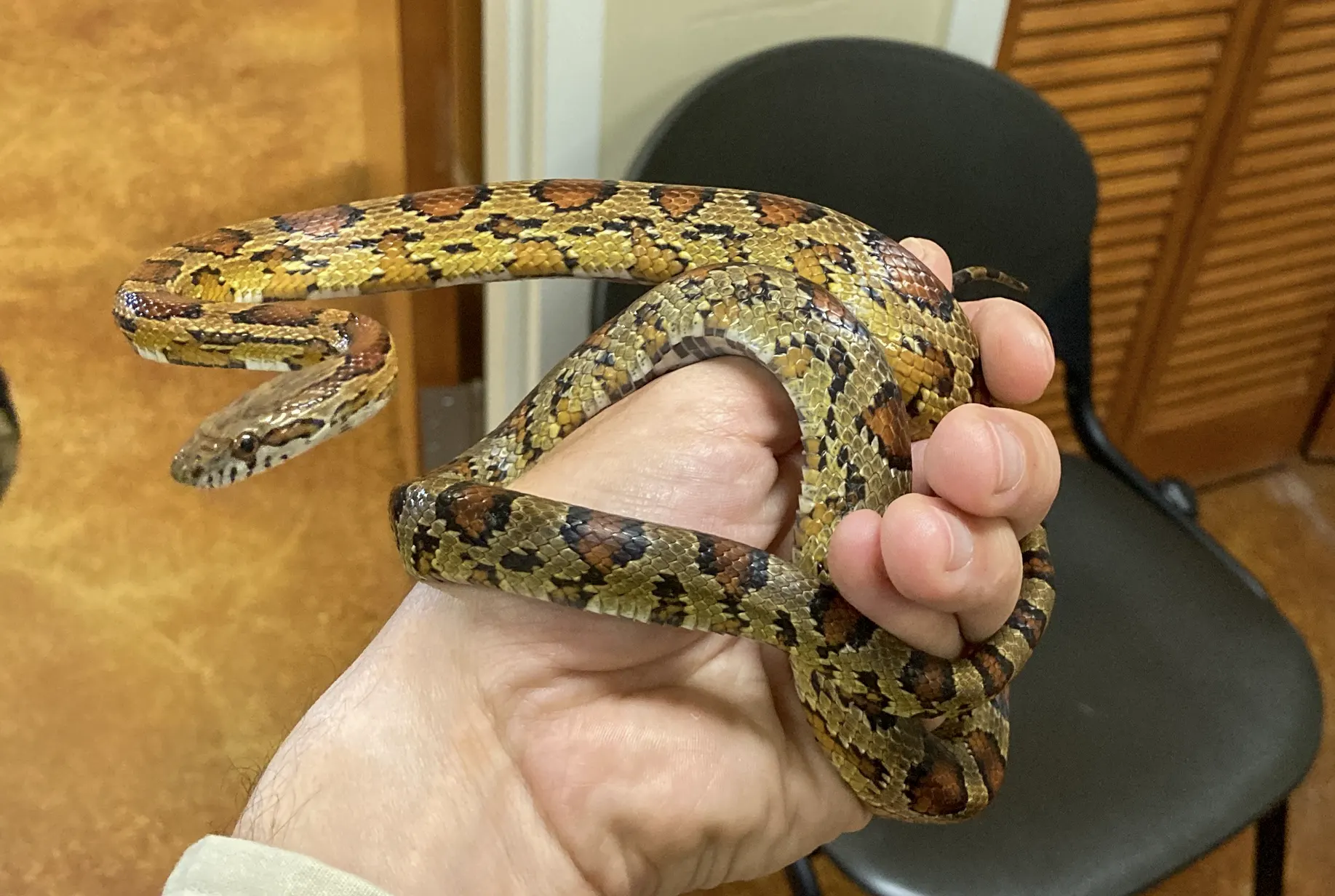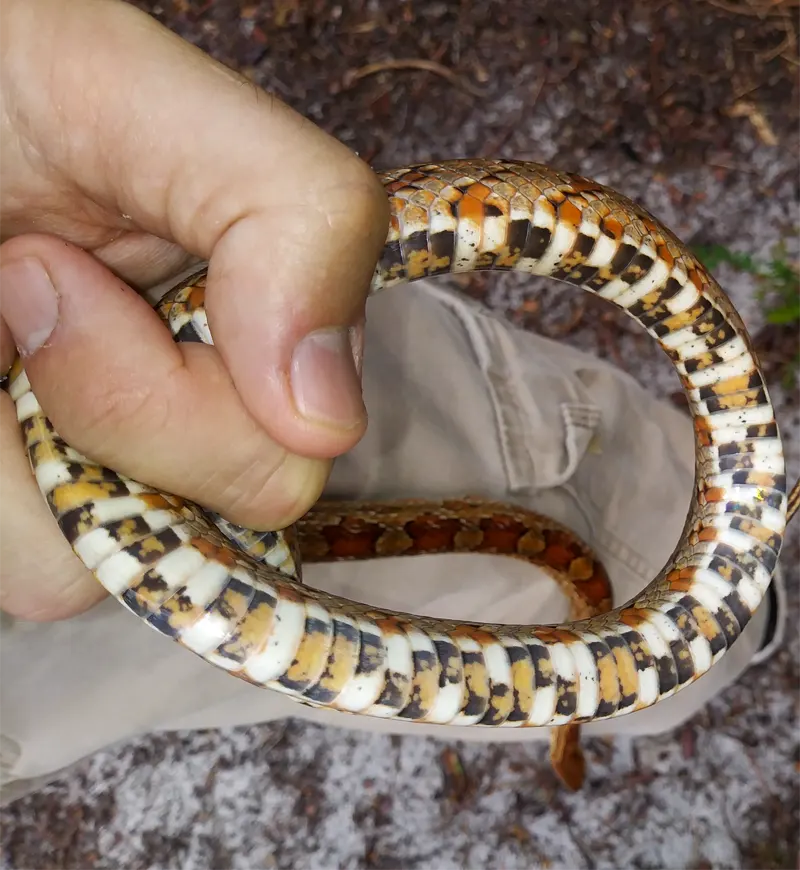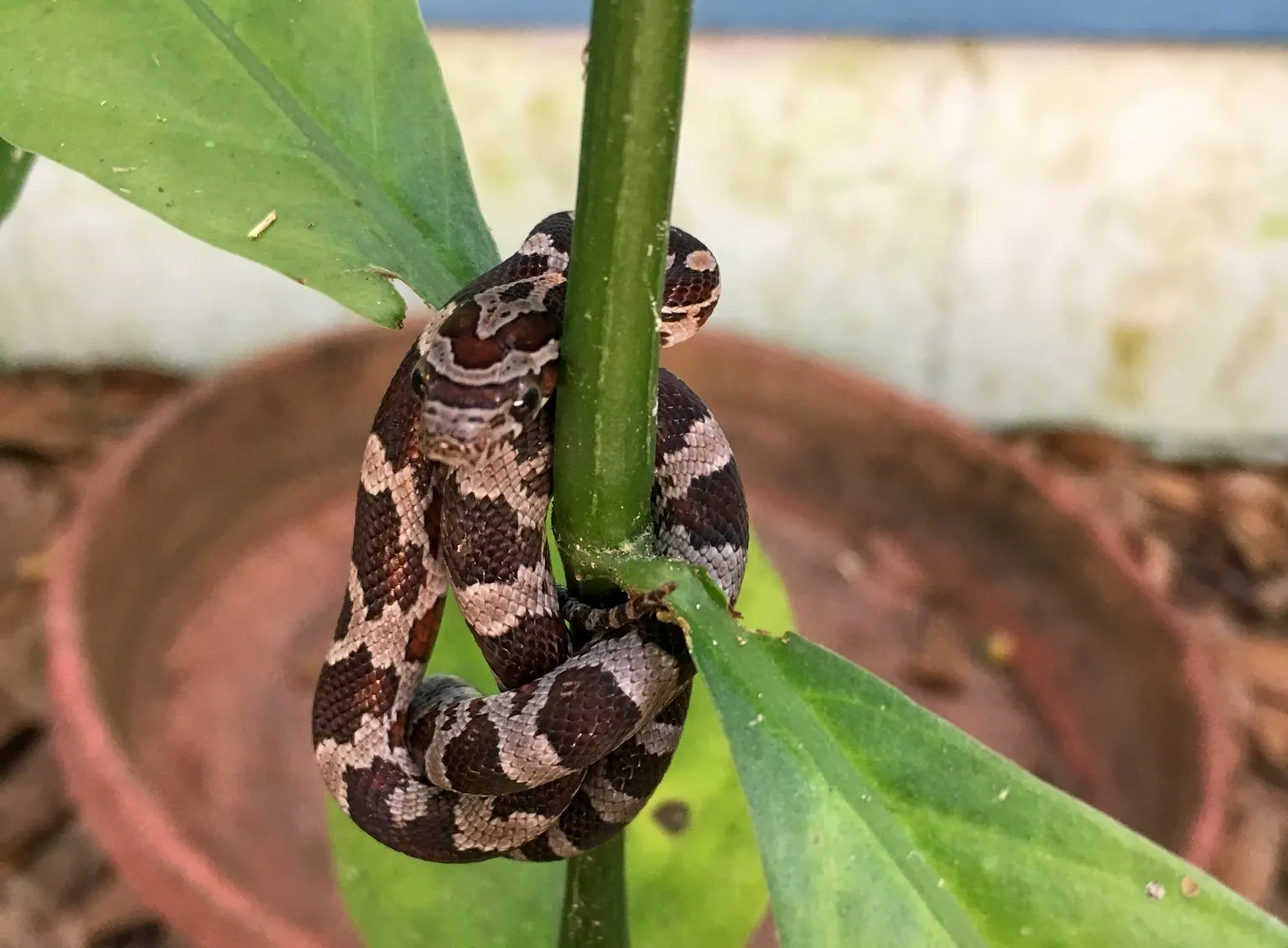
- Scientific Name
- Pantherophis guttatus
- Range
- Central and Northern Virginia
- Also Known As
- Red Corn Snake, Chicken Snake
- Venomous
- No
- Features
- Orange Body With Checkerboard Belly
- Prey
- Rodents, Reptiles, Amphibians, Eggs
- Litter Size
- 7 - 20 Eggs per Birth
- Life Span
- 6 - 23 Years
- Length
- 30 - 48 Inches
Quick Links for Corn Snake
Corn Snake Description
Corn Snake Appearance
Juveniles will have the same pattern as the adults, but the blotches will be lighter with almost a chocolate brown color.
Size
This snake is normally between 30 to 48 inches long, however, the record length for this snake is about 72 inches. The record found in Virginia is 56.7 inches.
Juveniles tend to be 10 to 12 inches long.
Corn Snake Behavior
These snakes are nocturnal and are active at night. Usually you can find these snakes on the ground and alone as these are solitary creatures.
During the winter they brumate, and you can find them in closed spaces such as rock crevices and under logs.
These snakes are not aggressive and do not bite when handled.
It is illegal in Virginia to keep Wild Snakes as pets
Range and Habitat of The Corn Snake
Range
These are common in central Virginia, but can be found in the Alexandria area, and rarely near the North Carolina border. Strangely enough, there are none in Northern North Carolina, and Pennsylvania, yet they are everywhere in New Jersey and Delaware. They can be found all across the American South. Some have shown up in California, Japan, and the UK.
Habitat
Their habitat consists of overgrown fields, forests, forest edges, and rocky hillsides. They can also be found in barns, and other areas where food supply such as rodents are present.
Diet
Their diet consists of small rodents, reptiles, and amphibians. They also like to eat unguarded bird eggs, and will not grab them if they have to fight. While there are rumors that these snakes will cannibalize other Cornsnakes, these have only been observed in captive conditions.
Reproduction and Young
Reproduction
Mating for these snakes occur in March to May, where the female will lay eggs in late May or July.



